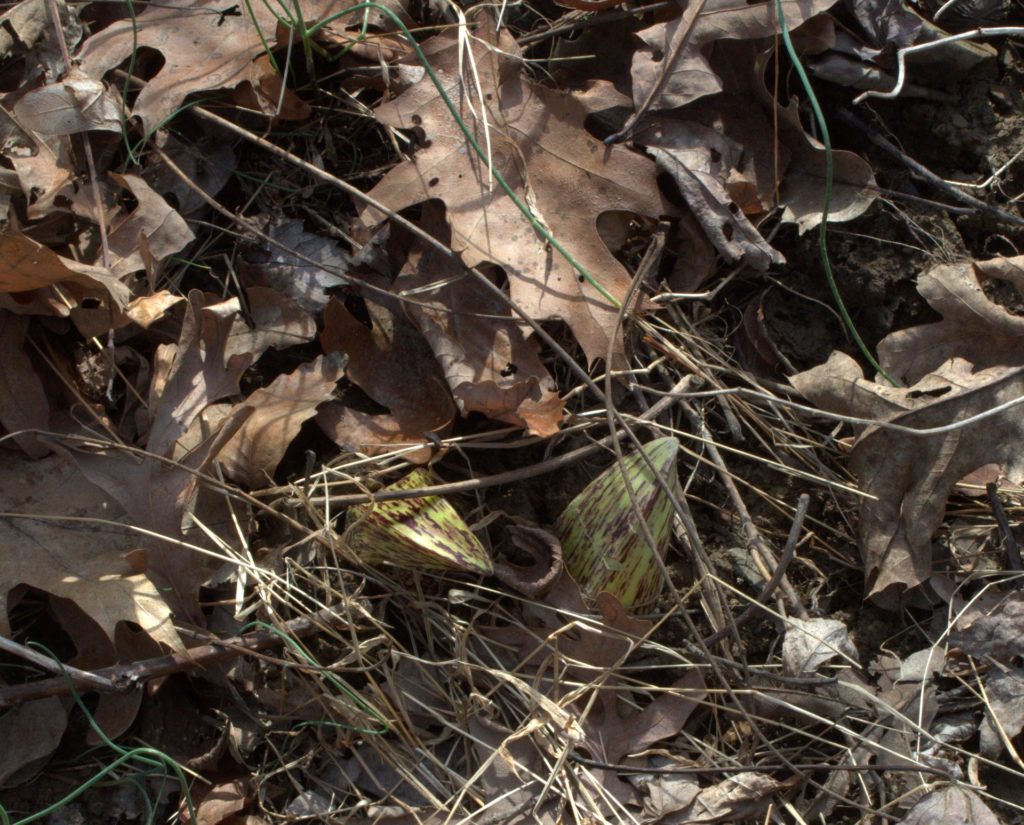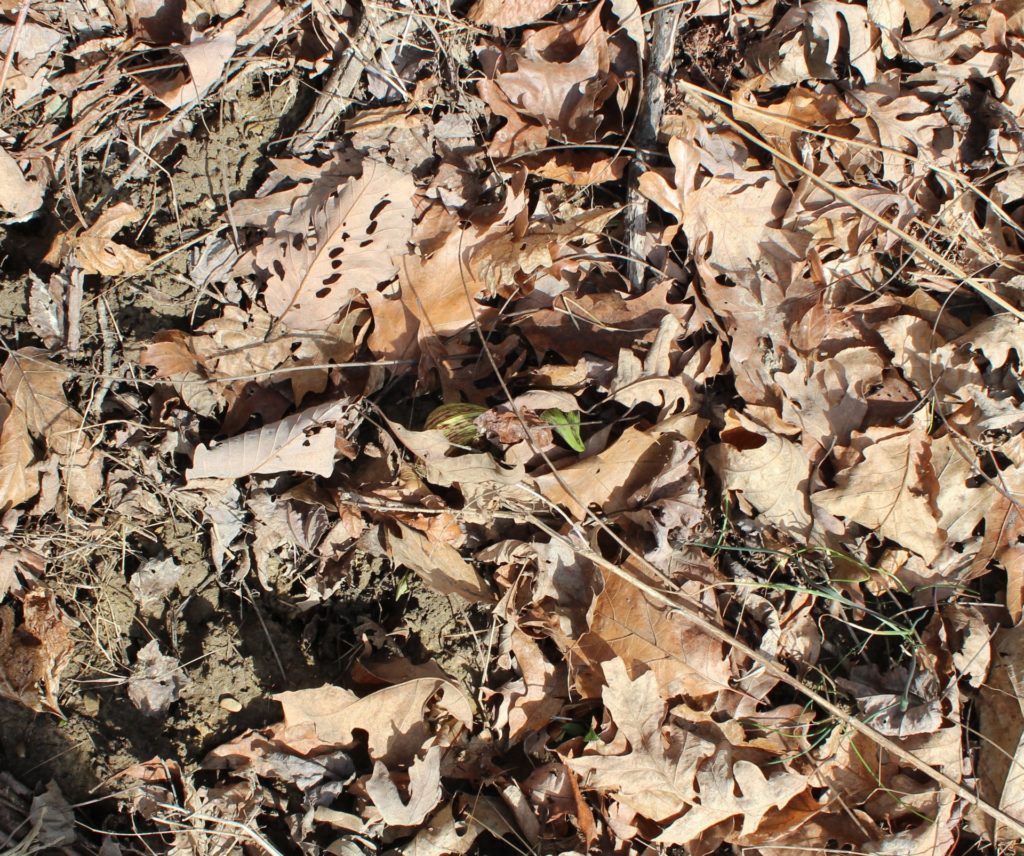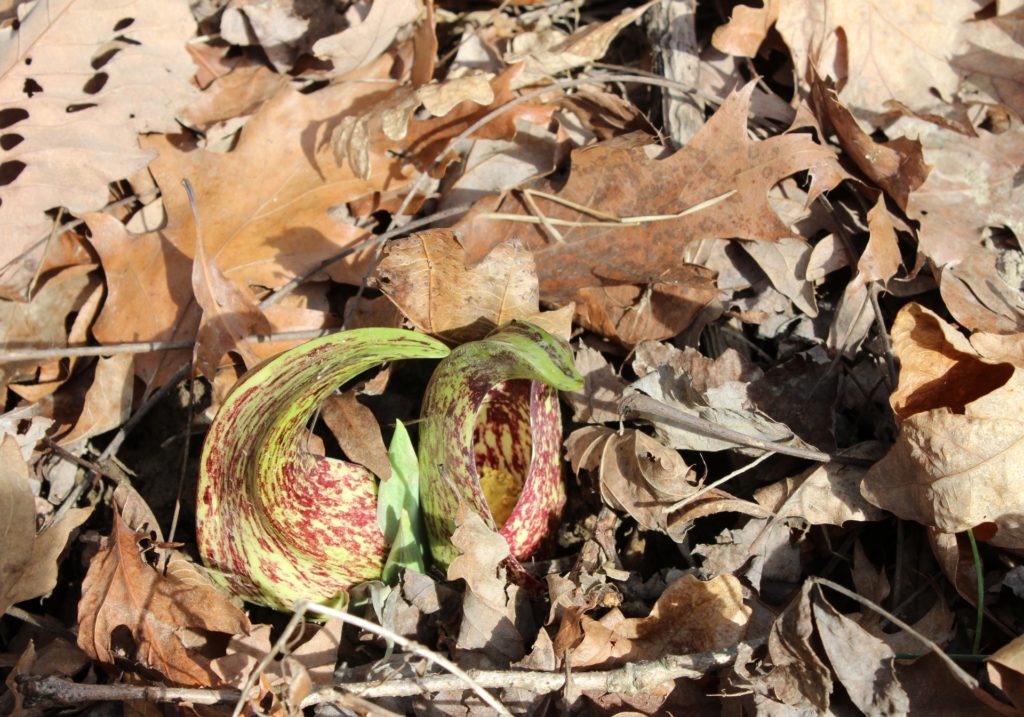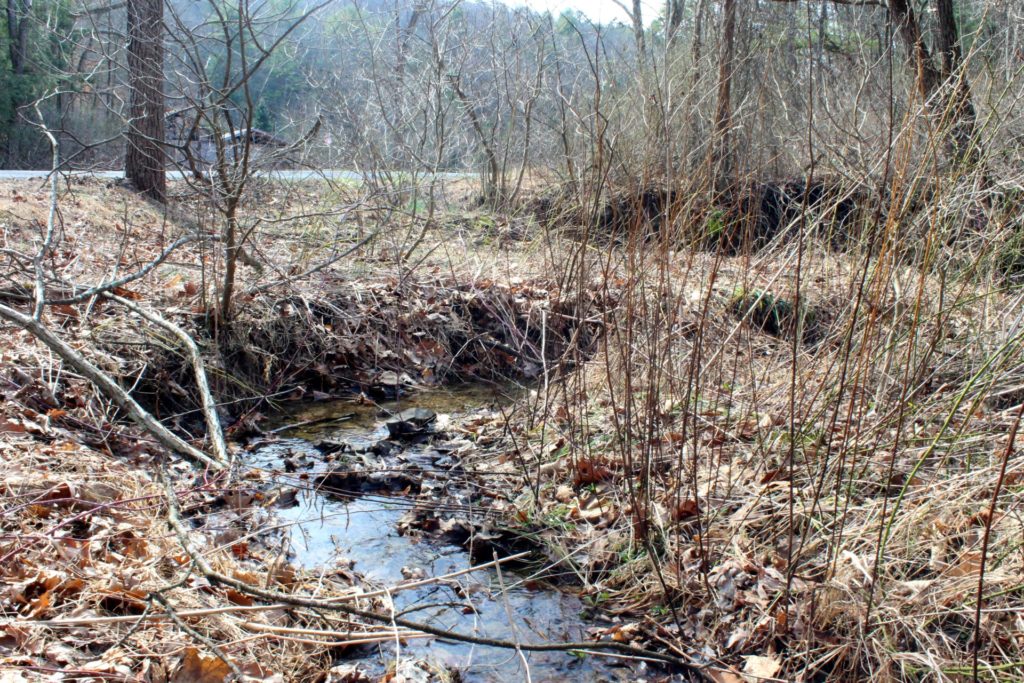Saw a fly buzz around the other day, so I went looking for a patch of stinkin’ Skunk Cabbage. Actually, it was February 28th, after some record-breaking warm weather for a couple of days here in Central Pennsylvania, on Feb 23 and 24. (Photos taken Feb 28, 2017).
It was probably the earliest in a year that I’ve seen their mottled spathes sticking out among the weeds.
Skunk cabbage spathes emerge from the ground among last year’s weed stems, berry canes and brown oak leaves.

They’re easy to miss in the woods as they hide under the brown oak leaves. You may have to get right up on them to discover them, so watch where you place your feet!

Move aside a few leaves and you’ll see the spathes have fully developed flowers on the spherical spadix inside.

Skunk cabbages likes to grow near water so much you can find it them in the middle of a creek. It’s a mountain stream where I spotted several of those yellow-green and maroon protective flower hoods growing right in the flow of water. Plenty others were in the flat areas adjacent to the stream.
At least six other skunk cabbages are hiding adjacent to this stream. Can you find them all? (Click on any image to see a larger view.)

Here, the mountain stream winds into a culvert that passes under the country road.

The mottled spathes protect the flowers from rain and snow and extremely low temperatures while keeping them hidden from casual passersby.
Flowers grow in colonial fashion upon a sphere inside the spathe, which is called a spadix. The spadix and flowers are pastel, creamy white to yellow.

Flies are known to pollinate Skunk Cabbage, and I did see a single fly on this day. Refer to Peterson’s field guide, Wildflowers: Northeastern and North-central North America, for more details on this interesting earliest of Spring flowers. Or should I say, Winter Flowers?!
If you’re out and about scouting out your own patch of Skunk Cabbage, take caution. It’s known that black bears like to eat the stuff. They won’t appear for a little while since it’s so cold, but once the leaves appear keep your eyes and ears tuned. If you’re lucky enough to see a bear, make some noise to let them know you’re there. Whatever you do, don’t run!
Check out my other posts about Skunk Cabbage for some great pics!